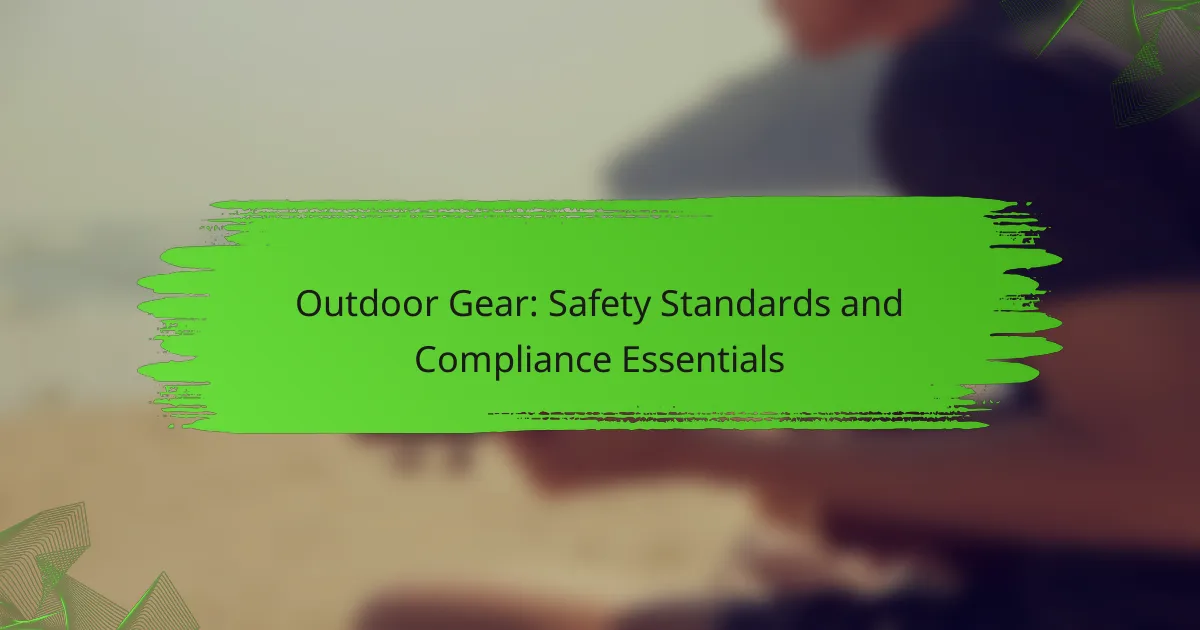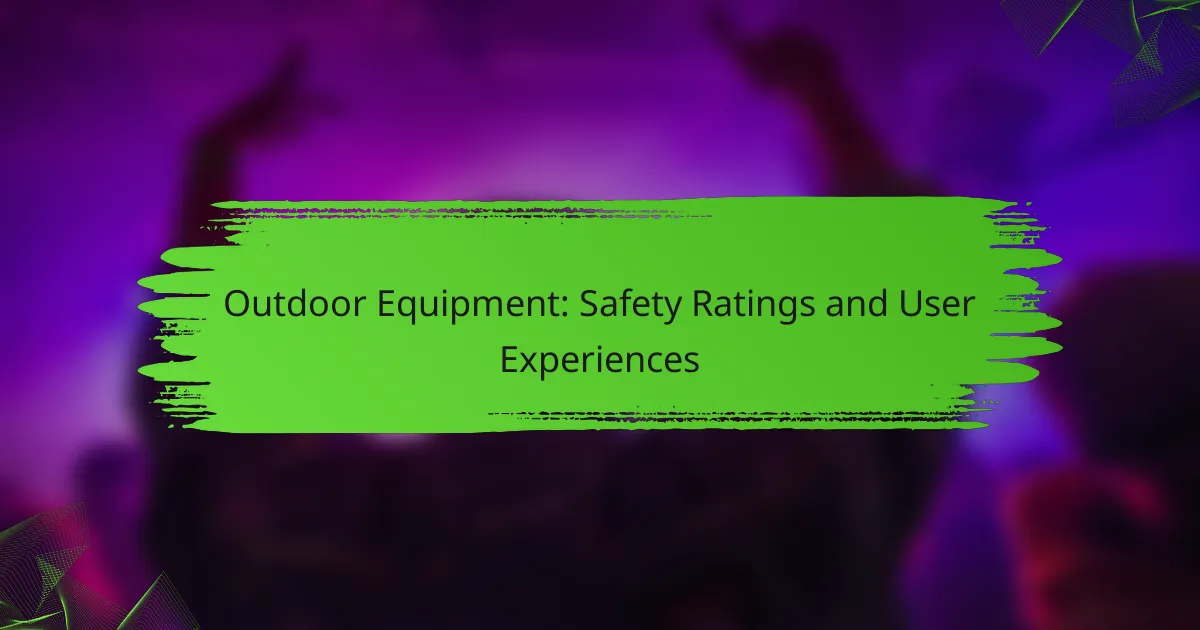When it comes to first aid kits, choosing one that combines a comprehensive range of supplies with reliability is crucial for effective emergency preparedness. Key safety features such as the quality of contents, durability, and organization can significantly impact your ability to respond quickly to injuries. Opting for trusted brands that adhere to safety standards ensures you have the necessary tools at hand when it matters most.

What are the best first aid kits for home use?
The best first aid kits for home use are those that provide a comprehensive range of supplies, ensuring preparedness for common injuries and emergencies. Look for kits that include essential items like bandages, antiseptics, and tools, along with reliability from trusted brands.
American Red Cross First Aid Kit
The American Red Cross First Aid Kit is designed to meet the needs of families and individuals, featuring a variety of supplies for treating minor injuries. It typically includes adhesive bandages, antiseptic wipes, and gauze pads, all organized in a durable case.
This kit is compliant with safety standards, making it a reliable choice for home use. Its compact size allows for easy storage, and it’s suitable for both indoor and outdoor emergencies.
Johnson & Johnson All-Purpose First Aid Kit
The Johnson & Johnson All-Purpose First Aid Kit is a well-rounded option that contains essential items for treating cuts, scrapes, and burns. It includes a selection of bandages, ointments, and first aid instructions, ensuring users can respond effectively to injuries.
This kit is known for its quality and reliability, making it a popular choice among households. Its user-friendly organization helps quickly locate necessary supplies during emergencies.
Surviveware Small First Aid Kit
The Surviveware Small First Aid Kit is ideal for those who need a portable option without sacrificing essential supplies. It includes items like bandages, scissors, and a first aid manual, all packed in a waterproof bag.
This kit is particularly useful for outdoor activities, such as hiking or camping, due to its compact design and durability. It’s a great choice for individuals who want a reliable first aid solution on the go.
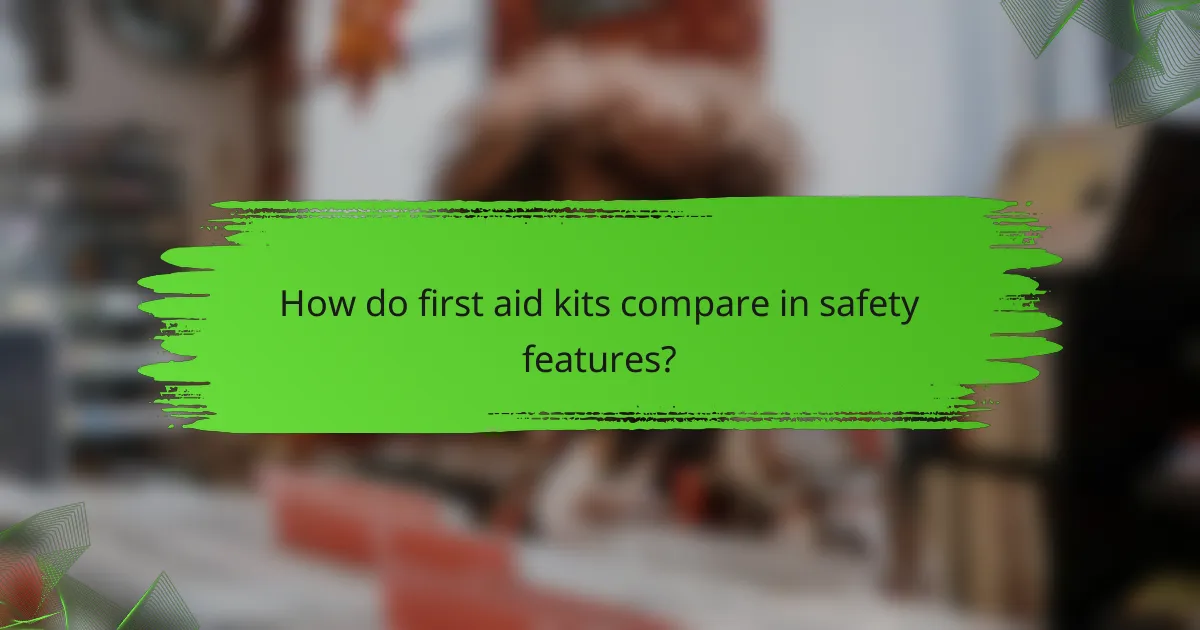
How do first aid kits compare in safety features?
First aid kits vary significantly in safety features, impacting their effectiveness in emergencies. Key aspects to consider include the contents, durability, and organization of the kits, which can influence how quickly and efficiently you can respond to injuries.
Contents and supplies overview
The contents of first aid kits can range from basic bandages and antiseptics to advanced items like splints and emergency medications. A well-equipped kit typically includes adhesive bandages, gauze pads, antiseptic wipes, and scissors. Depending on the intended use—home, travel, or workplace—specific supplies may be prioritized.
When comparing kits, check for compliance with recognized standards, such as those set by the American National Standards Institute (ANSI) or the Occupational Safety and Health Administration (OSHA). This ensures that the kit meets minimum safety requirements for various environments.
Durability and waterproofing
Durability is crucial for first aid kits, especially if they are intended for outdoor use or travel. Look for kits made from robust materials that can withstand rough handling and environmental conditions. Waterproof or water-resistant cases are particularly valuable, protecting contents from moisture damage during outdoor activities or in humid environments.
Some kits feature hard-shell cases, while others may use soft bags. Consider your needs: hard cases offer better protection but can be bulkier, while soft bags are lighter and easier to carry but may not provide the same level of durability.
Ease of access and organization
Ease of access and organization are critical for effective first aid response. Kits should have clearly labeled compartments or pockets to help you quickly locate supplies during an emergency. Some kits include color-coded sections or removable pouches for better organization.
When evaluating a kit, consider how it opens and whether it allows for one-handed access. A well-organized kit can save valuable time, making it easier to find essential items like gloves or bandages when every second counts.
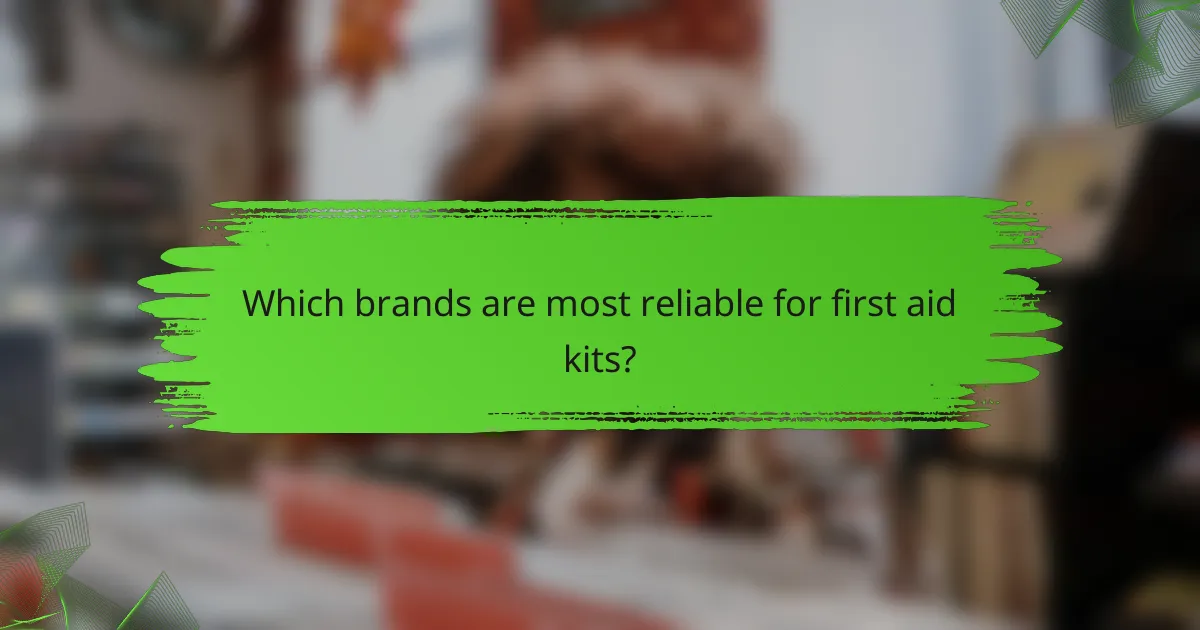
Which brands are most reliable for first aid kits?
Reliable first aid kit brands are known for their quality, comprehensive contents, and adherence to safety standards. When selecting a first aid kit, consider brands that consistently receive positive reviews and meet regulatory guidelines.
Adventure Medical Kits
Adventure Medical Kits is recognized for its specialized kits designed for outdoor activities. Their products often include items tailored for wilderness emergencies, such as splints and advanced wound care supplies. Many kits are compact and lightweight, making them ideal for hiking and camping.
When choosing an Adventure Medical Kit, look for options that include a variety of medical supplies, such as antiseptics, bandages, and tools for treating common outdoor injuries. Their kits often come with detailed instructions, which can be crucial in emergency situations.
Ready America
Ready America focuses on providing emergency preparedness kits suitable for home and travel. Their first aid kits are designed to address a range of emergencies, including natural disasters, making them versatile for various situations. The kits typically contain essential items like band-aids, antiseptic wipes, and gauze.
Consider Ready America kits if you want a comprehensive solution that covers both first aid and basic survival needs. Their products are often packaged in durable, easy-to-carry bags, ensuring you can access supplies quickly when needed.
Medique Products
Medique Products is known for its first aid kits that cater to both personal and workplace needs. Their kits often include a wide array of items, from basic supplies to specialized products like burn cream and eye wash. Medique emphasizes compliance with OSHA regulations, making their kits suitable for business environments.
When selecting a Medique kit, check for the specific contents to ensure it meets your needs, whether for home use or workplace safety. Their kits are often available in various sizes, allowing you to choose one that fits your specific requirements.
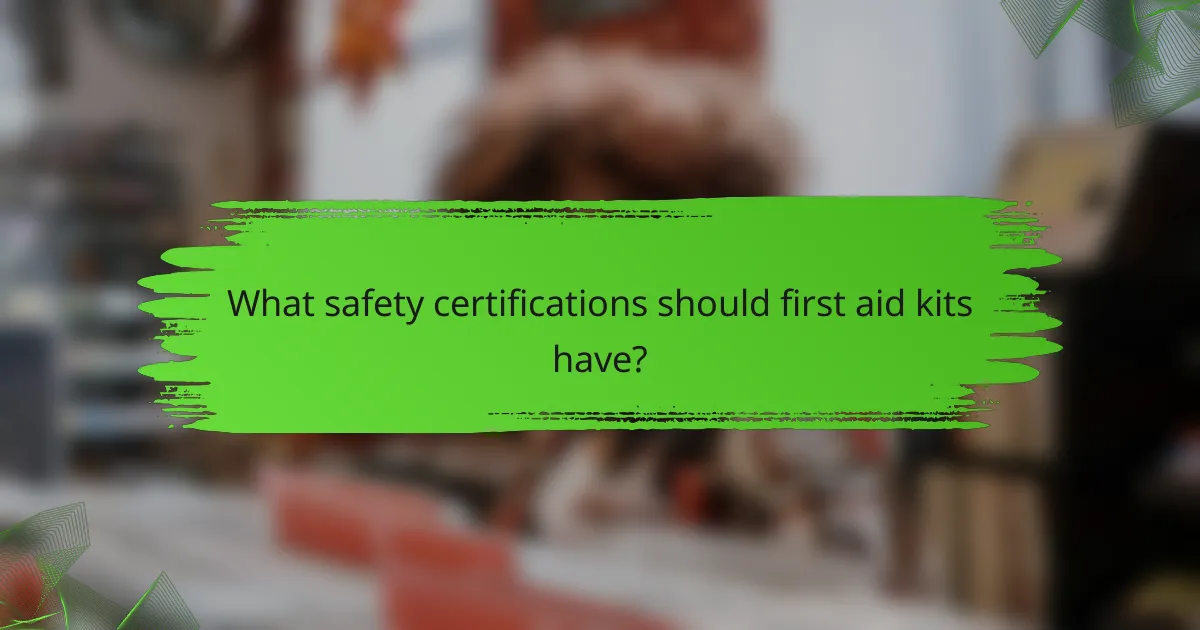
What safety certifications should first aid kits have?
First aid kits should ideally have safety certifications that ensure their contents meet specific quality and effectiveness standards. Key certifications to look for include ANSI compliance and FDA approval, which indicate that the kits are reliable and safe for use in emergencies.
ANSI compliance
ANSI compliance means that a first aid kit meets the standards set by the American National Standards Institute. These standards ensure that the kit contains the necessary items for treating common injuries and that the items are of good quality. When choosing a kit, look for those that are labeled as ANSI compliant to ensure they meet these essential requirements.
ANSI standards categorize first aid kits based on their intended use, such as workplace or home use. For example, a workplace kit may need to include specific items like burn dressings or eye wash, depending on the potential hazards present. Always check the contents against the ANSI guidelines to confirm adequacy.
FDA approval
FDA approval indicates that the products within a first aid kit have been evaluated for safety and effectiveness by the U.S. Food and Drug Administration. This certification is particularly important for items like antiseptics and medications included in the kit. Products with FDA approval are generally considered safe for public use.
When assessing a first aid kit, verify that the medications and treatments included are FDA-approved, as this ensures they have undergone rigorous testing. Be cautious of kits that contain unregulated items, as they may not provide the expected level of safety or efficacy in emergencies.

How to choose the right first aid kit for outdoor activities?
Selecting the right first aid kit for outdoor activities involves considering the specific environment and potential injuries you may encounter. Look for kits that are compact, lightweight, and equipped with essential supplies tailored to hiking, camping, or other outdoor pursuits.
Size and weight considerations
When choosing a first aid kit for outdoor activities, size and weight are crucial factors. A compact kit that fits easily in your backpack is preferable, ideally weighing no more than a few hundred grams. This ensures that it won’t add significant bulk to your gear while still providing necessary supplies.
Consider the duration of your outdoor activity. For day hikes, a smaller kit may suffice, while longer trips may require a larger kit with more supplies. Always balance the need for comprehensive care with the practicality of carrying the kit.
Specific supplies for hiking and camping
A first aid kit for hiking and camping should include supplies tailored to common outdoor injuries. Essential items include adhesive bandages, antiseptic wipes, gauze pads, and a triangular bandage for slings. Additionally, consider including blister treatment supplies, pain relievers, and a whistle for signaling in emergencies.
For more extended trips, adding items like a snake bite kit, a CPR face shield, and a thermal blanket can be beneficial. Always check that your kit complies with local regulations and standards for outdoor safety, ensuring it meets the needs of your specific activities.

What are the key components of a first aid kit?
A first aid kit should contain essential items to address common injuries and emergencies. Key components typically include bandages, antiseptics, tools for CPR, and various medications to manage pain and allergic reactions.
Bandages and dressings
Bandages and dressings are crucial for protecting wounds and promoting healing. They come in various sizes and types, including adhesive bandages, gauze pads, and elastic bandages, each serving specific purposes.
When selecting bandages, consider the types of injuries you may encounter. For minor cuts and scrapes, adhesive bandages are sufficient, while larger wounds may require sterile gauze and medical tape. Elastic bandages are useful for sprains or strains, providing support and compression.
Regularly check the kit to ensure that bandages are not expired and that you have a variety of sizes. It’s advisable to have at least a few different types on hand, including waterproof options for wet conditions.

